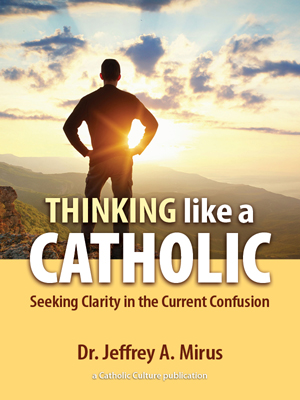with an eye for the greater good
By Diogenes ( articles ) | Nov 26, 2009
Remember Boston Auxiliary Bishop Robert Banks? In 1990, Banks slime-lined the notorious multiple molester Paul Shanley out to the Diocese of San Bernardino by writing him a letter of recommendation that said, "I can assure you that Father Shanley has no problem that would be a concern to your diocese." These assurances were taken. Shanley's now doing hard time in prison. Banks retired in 2003 with all flags flying.
Earlier this week an official report was released in Ireland detailing the manner in which the Archdiocese of Dublin dealt with sexual abuse by its clergy. Grim reading. Regrettably, it's all too familiar from what we've learned about the response tendered in the U.S.: an all but unbelievable concatenation of denial, table-turning, flat-out lying, and staggering leniency toward sexually anarchic priests.
A common explanation of the horrifying facts is that the higher clergy were prepared to do anything to protect the institutional Church. There's some truth to this: clearly much of the cover-up was designed to avoid bad press. But what comes through strongly in the report is the facility with which senior ecclesiastics flouted Canon Law and Church discipline in ways that disregarded the good of the institution, even in the crassest terms of corporate interest.
Take the case of Fr. Vidal (a pseudonym assigned a now-deceased priest in the report). You can read his story on pages 42-46 of this document. A summary:
- Vidal was ordained for a UK diocese in 1960 and had multiple affairs with women from the outset of his priestly life. He applied for laicisation, changed his mind, and in 1968 ended up ministering in the Archdiocese of Dublin (though never incardinated there). Soon a nun reported that Vidal was sexually involved with an adult woman and a girl aged 12-14. When confronted by his pastor, Vidal said the girl had a crush on him but denied it was reciprocated; he was warned to be more discreet and gave assurances he would comply.
- In 1977 Vidal applied for a leave of absence on the grounds of a vocational crisis. A psychological assessment stated Vidal "was promiscuous and that he 'never did, never could and never will' sustain a life of celibacy." A laicisation process was begun in which Vidal admitted several affairs with women, acknowledging that his relations with the girl in question had been sexual from age 13 onward. The girl was now in her 20s and Vidal wished to marry her.
- Vidal's laicisation was never completed, but the couple married anyway in 1980. Says the report: "The ceremony was conducted by a priest of the Archdiocese even though it would appear that Fr Vidal was not free to enter into a Catholic marriage. It was, however, a valid civil marriage." In 1985, Vidal contacted auxiliary Bishop O'Mahony and told him the marriage had broken down and he wanted to come back to priestly ministry. The bishop facilitated the separation and arranged for Vidal to go to the Diocese of Sacramento, CA. "O'Mahony wrote a letter of commendation to that diocese. The diocese of Sacramento has confirmed to the Commission that this letter made no mention whatsoever of Fr Vidal's previous activities."
- Vidal's wife was married to another man in a Catholic ceremony. To effect this, a Dublin archdiocesan functionary provided documentation saying her marriage to Vidal was invalid. She got a divorce from Vidal in Ireland in 1996; Vidal had gotten a divorce from her in California in 1992. The Diocese of Sacramento did not know he had been civilly married when he began ministry there.
And the paper trail? The key parts are missing. Bishop O'Mahony told the investigation Commission that he shredded the correspondence because Vidal had died (in 2004): “I felt that I had a duty to protect his good name and protect the good name of [the girl he married], who had subsequently married."
Clearly bishops were willing to pass on catastrophes to other bishops to rid themselves of an administrative nuisance. So tell me. If this is acting in order to protect the institutional Church, what would it look like to act in order to subvert her?
All comments are moderated. To lighten our editing burden, only current donors are allowed to Sound Off. If you are a current donor, log in to see the comment form; otherwise please support our work, and Sound Off!







